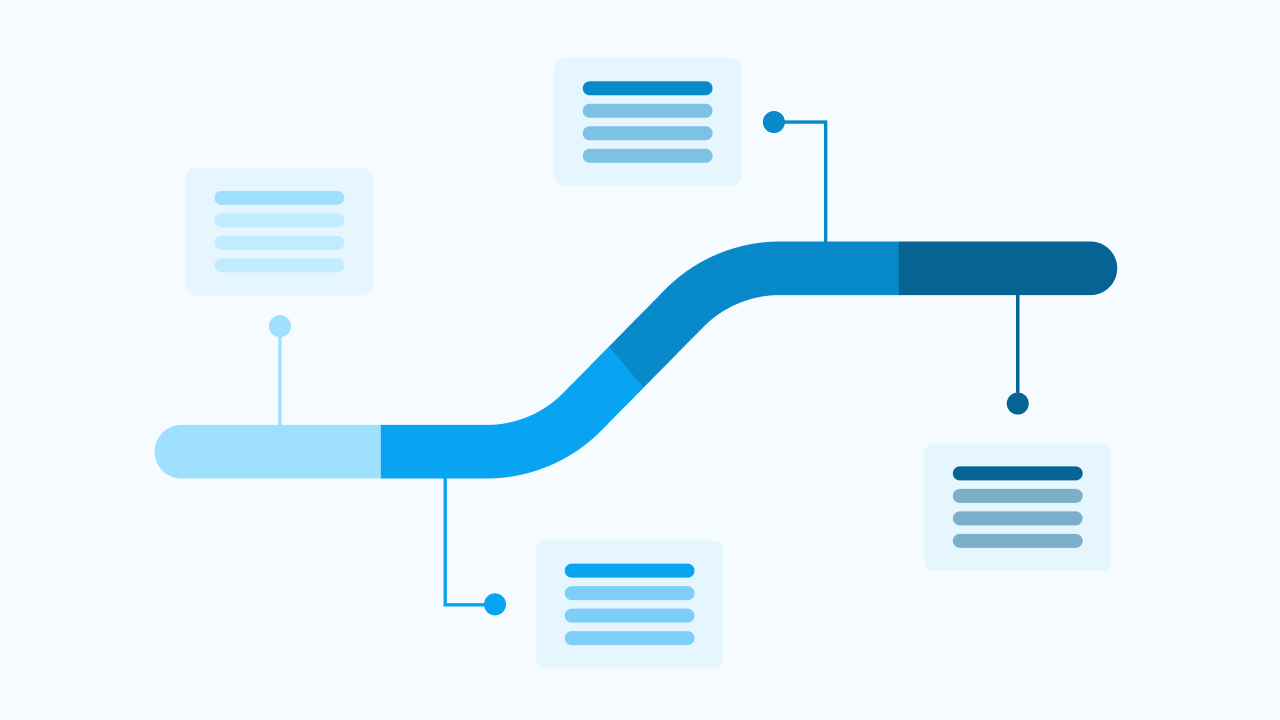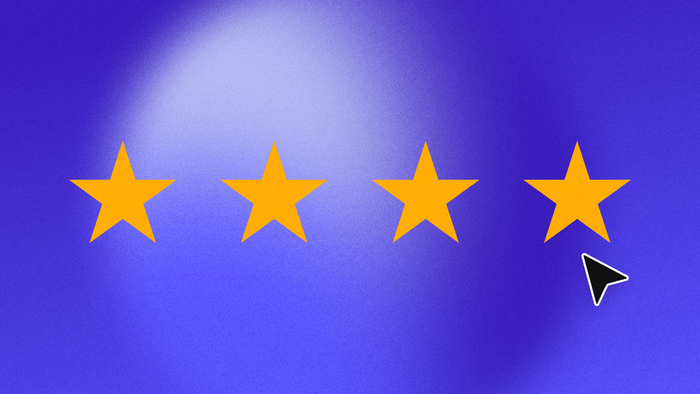All product roadmaps have unique challenges and goals. Those goals often depend on many different factors, like:
- Which team is using this product roadmap, or are multiple teams collaborating?
- What stage are you at in product development?
- What level of fidelity do you need in terms of workflow and features?
No matter how many product roadmaps you’ve made in the past, starting from scratch can be intimidating. Luckily, there’s an easier method: using a product roadmap template to give yourself a solid starting place.
We’ve pulled together seven product roadmap examples and formats you can follow when creating your product roadmaps. Whether you’re just starting to build your MVP or already juggling multiple products, you can find a roadmap template here that fits your needs.
What is a product roadmap?
A product roadmap (aka a product strategy roadmap) charts out both your direction and your course for creating your product:
- What's our big vision or our goal for this product? What’s the ideal result?
- What are we going to focus on to get to the result?
- How exactly are we going to get from point A to point B?
The main goal of your product roadmap is to get your entire team on the same page. Product roadmap planning helps chart out the work your team is going to do to accomplish your product vision and overall company goals.
As Laura points out, a product roadmap doesn’t need to be set in stone. Instead, design your product roadmap to be flexible and adaptable to accommodate iterations based on user testing and learnings.
What does a product roadmap include?
Every product roadmap is different — which makes sense, because it’s unique to your product and journey. However, at minimum, a well-crafted product roadmap should include most (if not all) of the following features:
- Goals and vision: The big picture of your product vision and direction
- What you’re working on: Prioritized features that are expected to be created
- Release dates and timelines: For your MVP, for key milestones and features, or just product versions
- The “why” of your priorities: How they map up to your larger vision
- Who will work on it: That is, what resources you need or are using
- How to measure impact: What success metrics or measurements you’re using
7 product roadmap examples
There’s no one right way to make an effective roadmap. However, sometimes it can be helpful to have a product roadmap example when starting to make sure that your roadmap is really working for you.
Here are seven of our favorite product roadmap examples to use:
1. Goals-based roadmaps
A goals-based product roadmap is just what it sounds like. This roadmap is organized around your strategic goals and maps everything else — like planned features, release dates, and metrics — to that big vision.
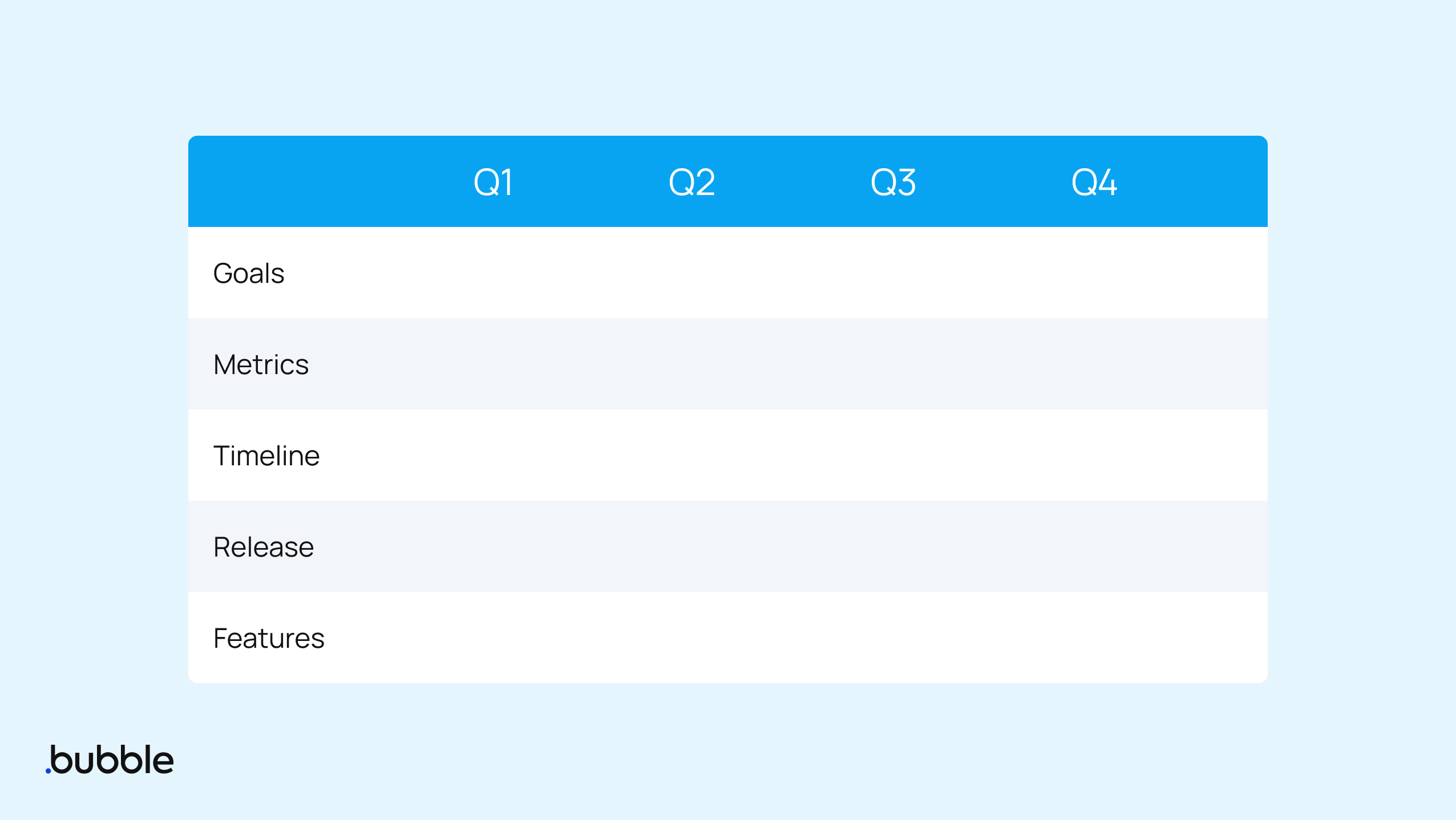
This is an internal roadmap best for aligning around strategic objectives and keeping the bigger picture in mind. It’s generally used by or for executive stakeholders, and it’s also great for getting investor support.
This is a really clear way to show a vision for each stage of your roadmap and how that ties back up to your business goals without getting bogged down in details.
Another benefit: Goals-based roadmaps are more flexible, since they’re less focused on the what and more focused on the why. If you realize the features you had planned aren’t the ones you need, that’s fine. You can easily adjust the details while still staying true to your strategic direction.
2. Features-based roadmaps
A features-based product roadmap is organized around the specific features being developed for each period, rather than the higher-level goals. That’s not to say that these features shouldn’t tie back to high-level goals — just that those aren’t the focus of this type of product roadmap.
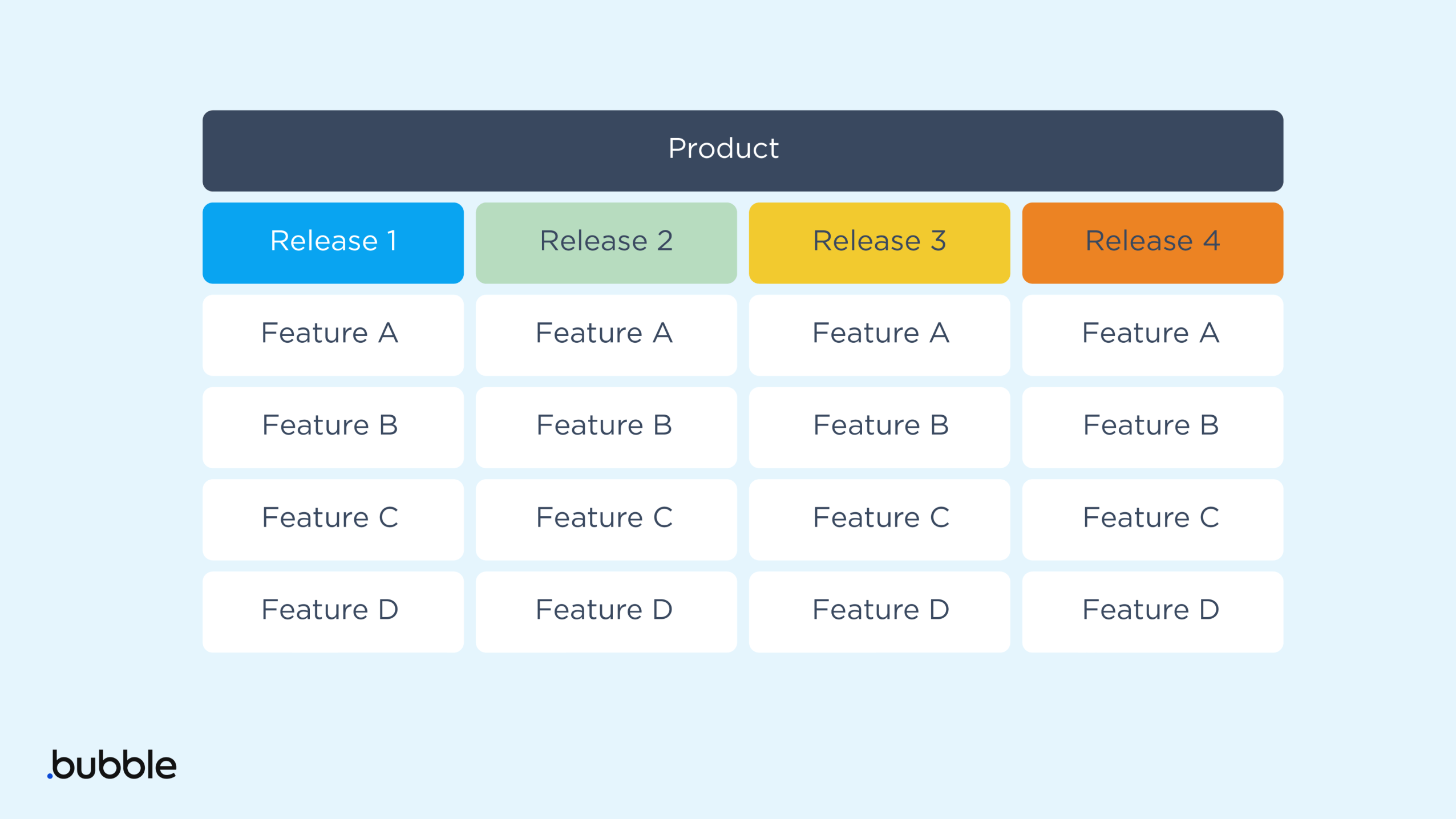
These types of product roadmaps are typically more granular. As such, they work best for your product team, development team, and engineering team to align on what’s being built when, and who’s responsible for it. A feature roadmap typically lays out details on:
- Prioritized features
- Release dates for each feature (or features grouped by release date)
- Priority level for new features
- Ownership (by team or individual)
- Dependencies
- Expected time or effort for building features
These roadmaps can be laid out on a Gannt chart or timeline view. They can also be grouped into cards or boards, as in a Kanban roadmap. Unlike goals-based roadmaps, features-based roadmaps are super tangible and deal with concrete deliverables. That means they work great as a product launch roadmap.
Features-based roadmaps can also make great public roadmaps, especially when they focus on which feature requests are being prioritized next and what future releases will include.
3. Timeline roadmaps
A timeline roadmap focuses on the product development process over time, showing how your MVP or V1 of your product will eventually grow into your larger product vision.
Typically, it’s set up on a timeline view, such as a Gannt chart, and shows upcoming releases and milestones. These roadmaps may be higher-level, simply showing the product development journey, or they can be more granular and include dependencies, features for each release, exact dates for releases, and more.

Timeline roadmaps tend to be used the most for complex products. Once you’ve gotten past your first few versions and have multiple teams coordinating on software development, timeline roadmaps provide a visually appealing way to align on both long-term vision and short-term work plans.
One of the biggest benefits of a timeline product roadmap is to show how different workstreams or functions add up to supporting major releases or key milestones. That’s not only beneficial for cross-team alignment and collaboration, but also useful for strategic planning and stakeholder communication.
A high-level timeline roadmap can also be used as a customer-facing roadmap. By adding the essential components of your release plan to a timeline view, customers can look forward to your product’s future state and feel reassured that you’re prioritizing features they care about.
4. Portfolio roadmaps
The key feature of a portfolio product roadmap is that it is a comprehensive roadmap for all your products. These types of product roadmaps are essential for teams who are already juggling a portfolio of products, rather than startups who are trying to launch their first MVP.
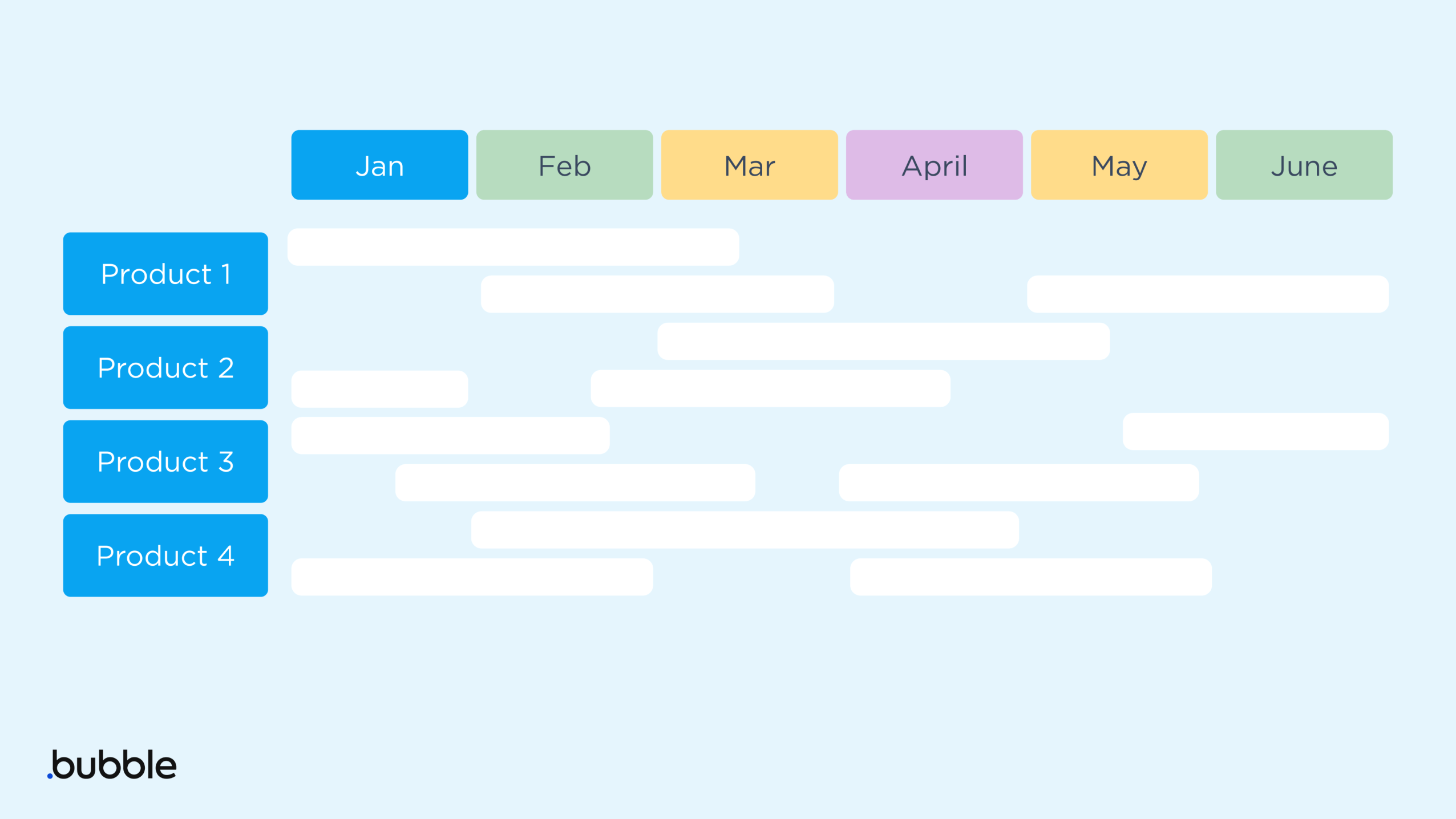
Since this type of roadmap shows multiple products, it has to be higher-level. Typically, they focus on specific releases and milestones, with high-level initiatives and release timelines for each product.
Portfolio product roadmaps are used for strategic planning by executive leadership to ensure the entire portfolio is aligned with key business goals and objectives. They can also help your team make sure there aren’t conflicting or duplicative efforts across various projects.
5. Scrum roadmaps
For teams working in an agile environment, a scrum roadmap (sometimes called an “agile roadmap” or “sprint plan roadmap”) is a tactical, agile product roadmap that shows project-level work in more detail.
This is one of the most granular product roadmap examples on this list and is great for project management. Typically, a scrum roadmap organizes upcoming feature development, epics, and milestones into timeboxed sprints, often two weeks in length. Each sprint lays out the exact features to be built and other work done in that time period, and shows how those sprints will map up into larger epics or overall initiatives.
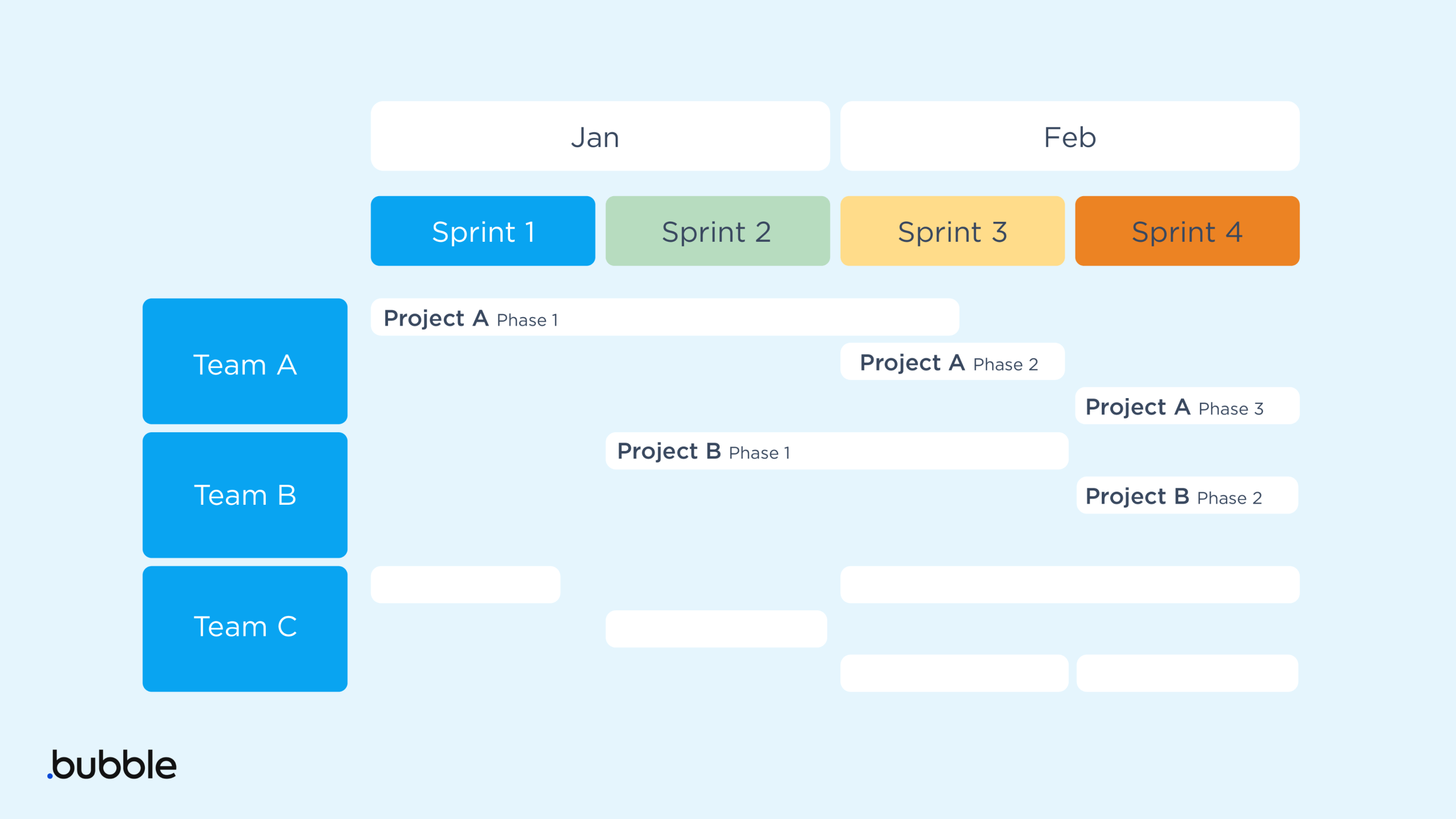
Scrum roadmaps are typically focused on the short term — just the next few sprints — so they’re best for teams focused on production: development, design, or engineering teams.
6. Epics roadmap
If you’re working with an agile development framework, you’ll also want to consider an epics roadmap alongside your scrum roadmap.
As we mentioned, a scrum roadmap is super granular and best for organizing and visualizing upcoming sprints. An epics roadmap, on the other hand, is a high-level strategic view that shows how upcoming work and feature builds will build up to larger product goals, initiatives, and epics over time. Instead of focusing on upcoming sprints, this roadmap framework lets you get a birds-eye view of product development over the next few months, quarters, or releases.
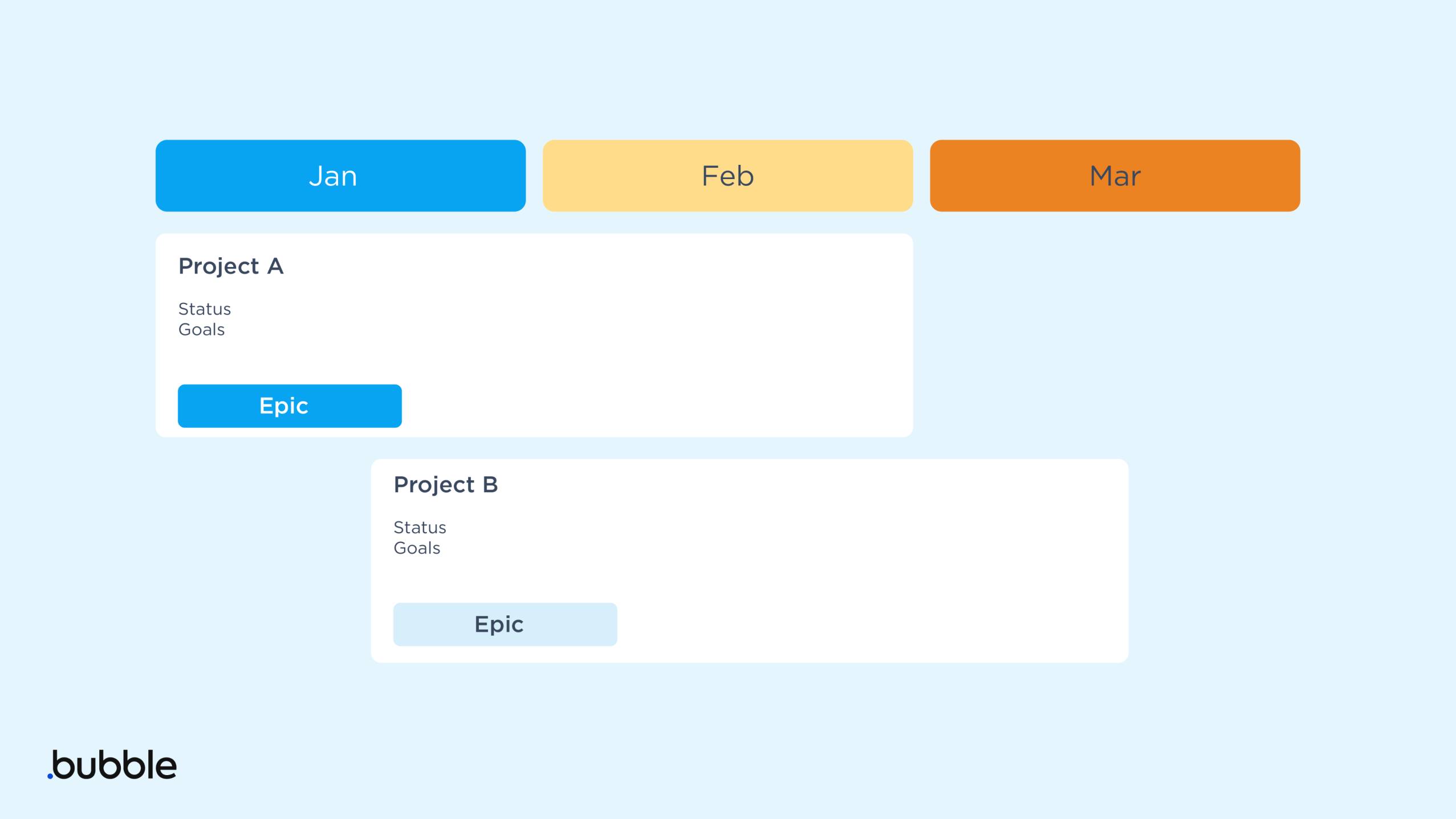
Since this is a higher-level view, executive teams usually use it for future planning, visualizing, and communicating strategic themes, and aligning on product development and upcoming epics.
While the scrum roadmap focuses on the “how” and the “when,” the epics roadmap focuses on the “what” and the “why.” Both fit within the agile framework, and both support and clarify the other, so use them in tandem!
7. Theme-based roadmaps
A theme-based product roadmap is one of the highest-level roadmaps you can use — which makes it great for startups just launching their minimum viable product, or V1 of their product.

Bubble Lead Product Manager Steve Harrington describes how to make a theme-based roadmap like this:
“Develop themes for your product work that'll help organize the features on your roadmap. They should be specific around your product area, but general enough that they’re never really completed in the way a specific feature is.
For example, your themes may center around enhancing performance, improving usability and design, and developing a richer feature set for users. From there, you can decide how you want to make progress across each theme, and evaluate how much time you are investing in each as you plan work for each quarter.
The effort applied in each theme will likely not be even every quarter, but thinking about things this way can ensure that you are regularly considering all the objectives of your team… and ensure you are making progress across all of them.”
Building a themes-based roadmap helps you organize everything into prioritized themes, or “buckets” for your upcoming work. They’re great for both high-level communication and planning more detailed work, since they clearly visualize the major areas of investment in your product, while also breaking down the activities aligned with each of these key themes.
Build what’s on your roadmap with Bubble
Once you’ve got your own roadmap in place, you’re ready to start building.
With no-code tools like Bubble, you can take your roadmap features from idea to reality in record time and cost-effectively..
Better yet: Your product can evolve naturally from its very first iteration. Gone are the days of building a prototype or an MVP for user feedback that’s designed to be thrown out and rebuilt “for real” later. With Bubble, you can build something that users can really use, interact with, and react to from day one.
Want to bring on a lean team to help you execute faster? Bubble-Certified Developers and Bubble agencies can help bring your ideas to life, without driving up costs or development timelines.
Build your app on Bubble's Free plan. No need to upgrade until you're ready to launch your app.
Join Bubble
